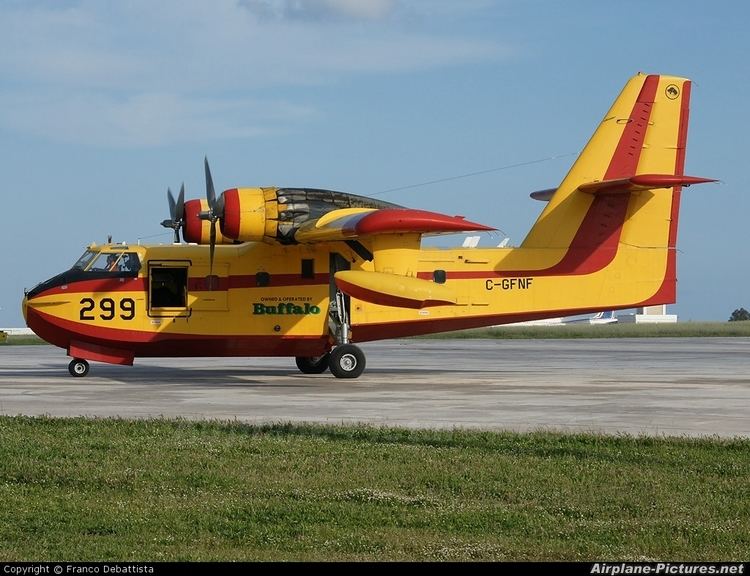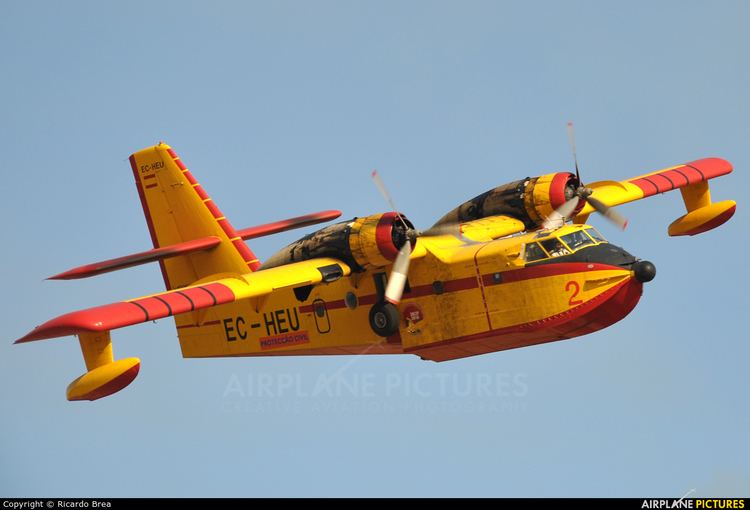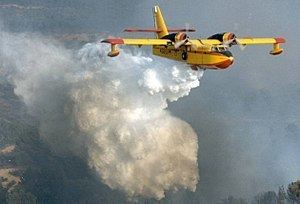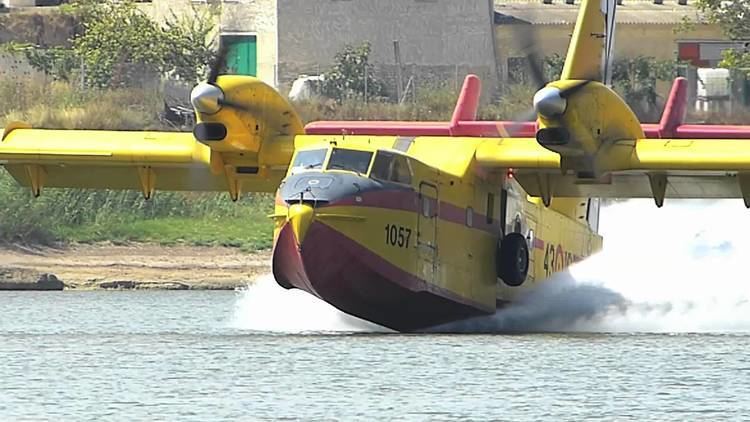Top speed 348 km/h Cruise speed 291 km/h Length 20 m | Range 2,260 km Wingspan 29 m | |
 | ||
Engine type Pratt & Whitney R-2800 Double Wasp | ||
Canadair cl 215 scooper firefighting amphibious aircraft hd
The Canadair CL-215 (Scooper) was the first model in a series of firefighting flying boat amphibious aircraft built by Canadair and later Bombardier. The CL-215 is a twin-engine, high-wing aircraft designed to operate well at low speeds and in high gust-loading environments, as are found over forest fires.
Contents
- Canadair cl 215 scooper firefighting amphibious aircraft hd
- Crash fail of canadair cl 215 water bomber amphibious rc float plane
- Design and development
- Variants
- Operators
- Former operators
- Accidents and incidents
- Aircraft on display
- Specifications CL 215
- References

Crash fail of canadair cl 215 water bomber amphibious rc float plane
Design and development

The CL-215 can be traced back to two early projects by Canadair, the CL-43 and CL-204. The CL-43 was conceived as a logistics aircraft and was based on the design of the Canadian Vickers-built 369 Canso (a variant of the Consolidated PBY Catalina). Arising from an earlier 1960s research study at the company, the original concept was for a twin-engined floatplane transport, that was altered into a "firefighter" as a result of a request by forestry officials in the Quebec Service Aérien (Quebec Government Air Service) for a more effective way of delivering water to forest fires. The 1962 preliminary design, the CL-204, was a purpose-designed water bomber that evolved into an amphibian flying boat configuration, powered by two shoulder-mounted 2,100 hp (1,566 kW) Pratt & Whitney R-2800 piston engines. The definitive design known as the CL-215 received a program go-ahead in February 1966 with its maiden flight on 23 October 1967. The first delivery was to the French civil protection agency (Sécurité Civile, then known as Protection Civile) in June 1969. Production of CL-215s progressed through five series ending in 1990.
Variants

In 1987, the CL-215T was announced, with improvements in handling brought about by design changes to the wings and empennage, and more powerful Pratt & Whitney turboprop engines. Originally the follow-up CL-215T was to be a simple turboprop-powered development of the CL-215, and Canadair converted two aircraft in 1989 to act as development aircraft. The first of these flew on 8 June 1989. Retrofit kits for CL-215s to the new standard are offered, but Canadair elected not to build new CL-215Ts and instead developed the CL-415.

Cascade Aerospace, Canada, offers CL-215 to CL-215T engine retrofits using the Bombardier kit and Pratt & Whitney Canada PW123AF engines and is currently the only conversion kit installer in the world.
Operators
Over a period of 21 years beginning in 1969, 125 of these aircraft were built and sold to customers in 11 countries.
As of January 2016 there were 59 CL215 registered with Transport Canada.
Former operators
Accidents and incidents
CL-215s have been involved in 30 accidents, 19 fatal.
Aircraft on display
Specifications (CL-215)
Data from Jane's All the World's Aircraft 1984–85
General characteristics
Performance
Avionics
